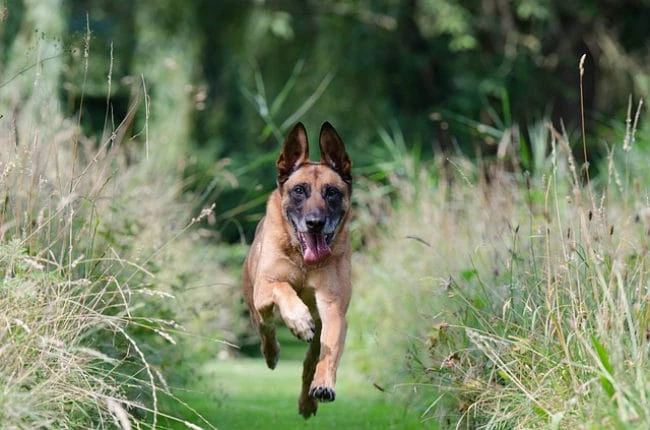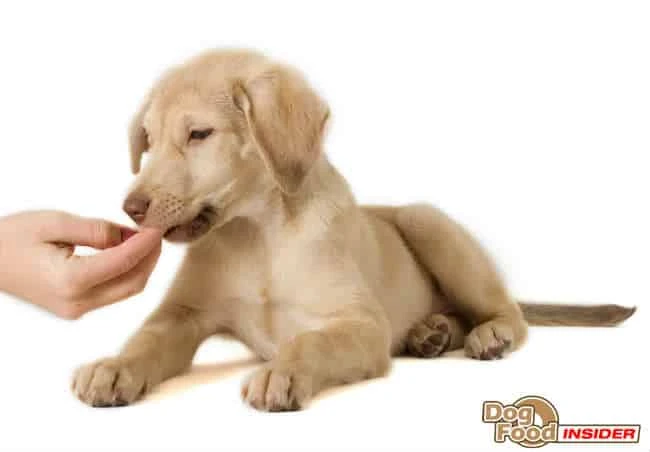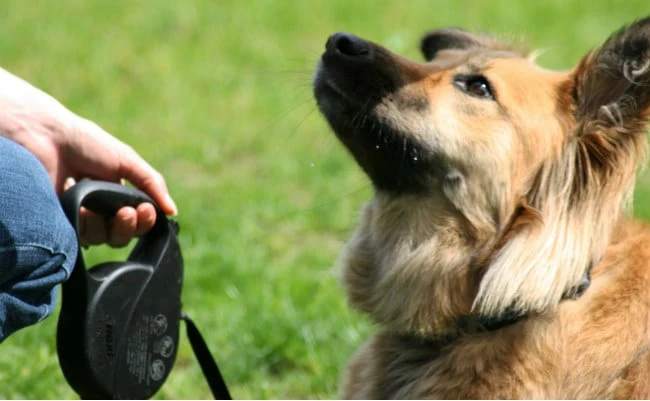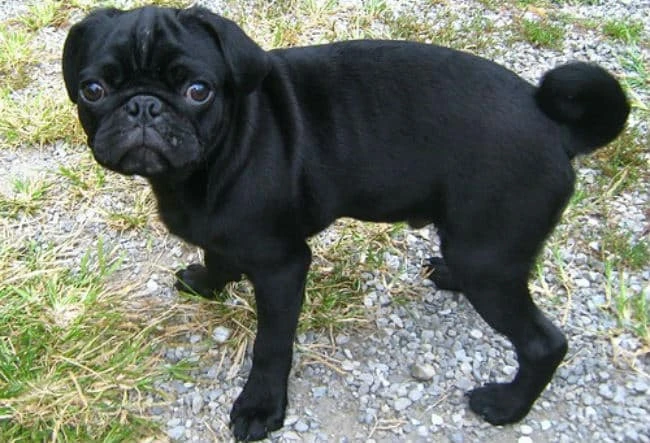Dog Agility Equipment Plans. Making Agility Course for Dogs, Toys
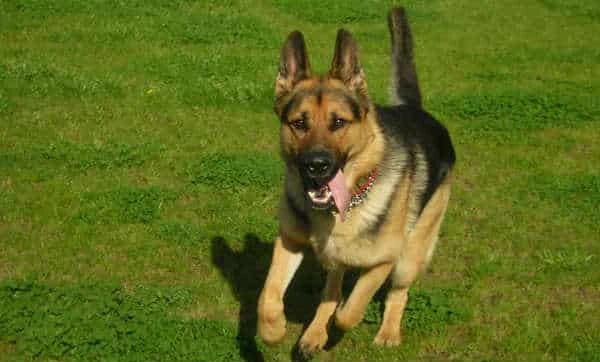
The best dog agility equipment plans enable the owner and his dog to feel mentally and physically challenged so that they both really feel that they have accomplished something by completing the obstacle course. On this page we have covered everything that you will ever need to know about dog agility courses and training your dog to be successful in competitions.
Before you purchase any dog agility equipment plans…
…you need to know a little about dog agility training…
Dog agility training is the process of a dog being taken through an obstacle course by the owner, handler or trainer. The dog is subsequently timed during it’s run through the course and is marked by judges on how accurately he has been when completing the course and how long it took to complete.
The trainer is not allowed to touch the dog or provide any incentives i.e. treats or toys during the dog’s run through the course. To make the dog complete the course the trainer will be limited to only using vocal commands, hand gestures and movements of the body – as you can imagine this means that the trainer will not only have exceptional dog training expertise but the dog is also fantastically well trained – watching a pooch run through an agility course is really something to see – it’s a man and his best friend at the peak of their expertise in terms of dog obedience training.
Before a dog is taken through the course the trainer will examine the course in some detail before a strategy is decided upon. The trainer will need to assess the best speed to take the dog through the course as it is also vital that the trainer takes into account that the faster they go the more chance there is of making a mistake on one of the obstacles – so a balance needs to be reached between speed and accuracy.
The agility course will have already been laid out by one of the judges in an area covering approximately 30 meters squared. Each obstacle would be numbered which will tell the trainer the order that the course should be completed. The trainer is also allowed to have a walk through of the course but the trainer will do this without his or her dog. It is a vital part of their success that the trainer does this walk through as the course is extremely intricate with each obstacle sometimes so close to the next obstacle that it would be easy for the trainer and dog to become confused.
Although the trainer will only be given one chance to complete the course some agility courses will also give the trainer a print or map of the course. This enables the trainer to establish the best running line and how to approach each obstacle. The run will be judged on how many faults the the trainer and his dog make – this might involve the dog knocking down a bar after a jump or missing an obstacle. Time faults are also another way for a trainer and dog to lose points – each agility course has a SCT or Standard Course Time – this is based on how complicated the course is and how long the judges think it will take to complete.
Dog Agility Equipment Plans
Tunnels…
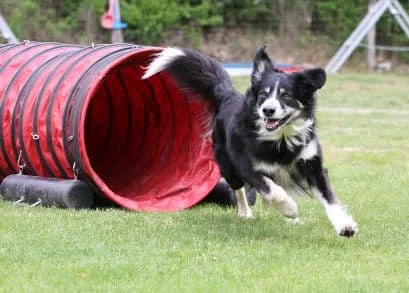
As mentioned previously with dog agility equipment plans the Tunnel obstacle can come in two forms i.e. fixed or collapsed. The Tunnel is one of my favorite obstacles to watch especially the pure joy and excitement that the dog has when completing this part of the run. The Tunnel is normally made of vinyl material and can reach twenty feet in length and two feet wide. The collapsed tunnel has one end (the end that your dog runs in to) is fully open but the end where your dog runs out will need to be pushed open by your dogs head.
Dog Agility Equipment Plans
The Pause Table
This part of the agility course really displays a dog’s obedience – mainly because he has been running at full speed and then has to stop and pause on a table for five seconds until the judge has finished timing him. The dog is either supposed to sit or lie down until the full five seconds are up. Out of all of the dog agility equipment plans designed by experts this is one of the most impressive to see.
The Slalom – Weave Poles
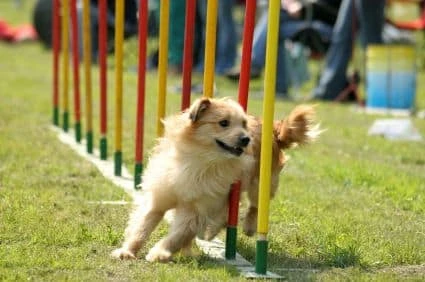
This obstacle takes enormous dexterity, accuracy and speed. The weave poles are attached to a long piece of wood and spaced at approximately 20 inches apart – the dog must not miss going through any of the twelve three foot poles or he will lose points.
The Doggie Walk
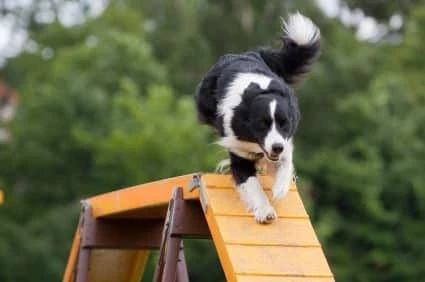
The dog walk involves the dog walking (or running) up a ramp that leads on to a horizontal plank and then down ramp to the floor. The planks are normally about twelve inches wide (so quite narrow) and the horizontal plank is set at about four feet from the floor. The planks will also normally have slats so that the dog has a way to get some grip in nasty weather.
The See-Saw
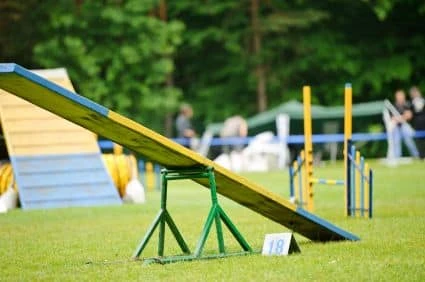
This is also one of the most difficult obstacle out of all of the obstacles set out in any dog agility equipment plans designed by experts – mainly due to the fact that it is quite unnatural and unexpected for a dog to walk and try and balance on a moving plank. The dog needs to practice this obstacle many times before taking part in an agility course. The See-Saw involves the dog walking up a single plank that is sometimes weighted at one end (this means that the plank – See-Saw) will always have contact with the floor however big or small the dog is – of course the weight will change depending on the size of the breed and individual dog.
The A-Frame
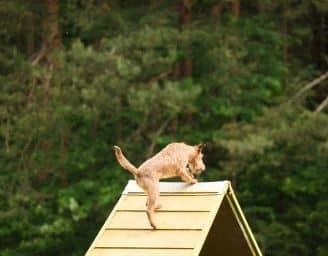
The A-Frame is not surprisingly shaped like the letter ‘A’. The frame incorporates a ramp that is hinged in the middle. Basically the dog runs up one end and down the other. The frame is normally set about one meter in width and set at about five feet high (or higher) from the ground. There are small slats on the frame to make it easier for the dog to climb the frame in all weather conditions.
The Hurdles or Jumps
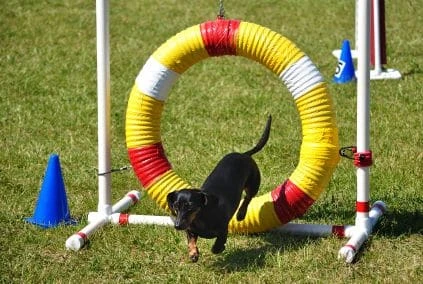
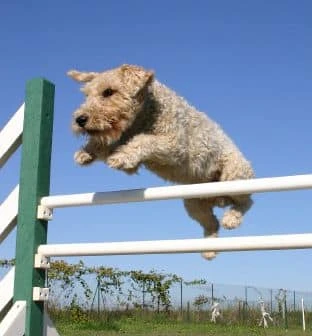
The Tyre Jump which you can see in the top photo is basically a tyre that is set at the right height for each breed that is going to jump it. The Tyre is raised off of the ground and attached a to a metal frame – then the dog will be expected to jump through the tyre at speed.
The Hurdles (bottom photo) are jumps similar to the jumps that Horses use in races however they are of course set much lower to the ground. The horizontal poles can come in twos or threes and can be set at different heights and angles. All jumps are set at the right height depending on the size of the breed and individual dog.
The Crossover (no photo) is a central table that is raised off of the ground – the central table will have four ramps coming from each side of the square table. This is a difficult obstacle as it needs the dog to be fast but not so fast that he or she will fall off of the end.
